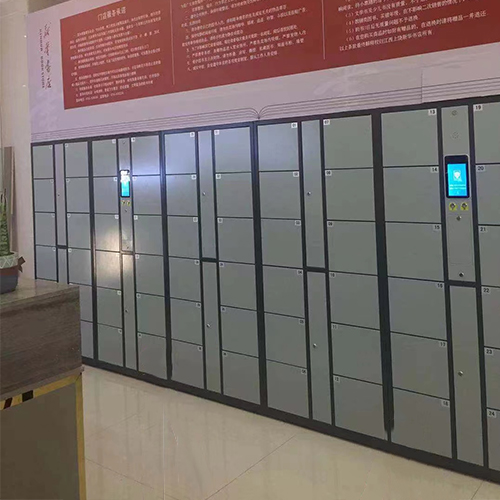In an era where security and convenience are paramount, facial recognition technology has emerged as a game-changer in various industries. One of its most promising applications is in the realm of secure storage—specifically, facial recognition lockers. These advanced lockers utilize biometric authentication to grant access, eliminating the need for keys, PINs, or RFID cards. This paper explores the technology behind facial recognition lockers, their benefits, potential drawbacks, and their growing adoption across different sectors.
How Facial Recognition Lockers Work
Facial recognition lockers operate using a combination of hardware and software components:
1. Camera System – High-resolution cameras capture the user's facial features, including the distance between the eyes, nose shape, jawline, and other unique identifiers.
2. Biometric Processing Unit – The captured image is converted into a mathematical representation (a facial template) and compared against stored data.
3. Authentication Algorithm – Machine learning algorithms verify the user’s identity in real-time, ensuring accuracy and preventing unauthorized access.
4. Locking Mechanism – Once verified, the locker automatically unlocks, allowing the user to retrieve or store their belongings.
Unlike traditional lockers, which rely on physical keys or codes, facial recognition lockers offer a contactless, password-free experience, reducing the risk of theft due to lost credentials.
Advantages of Facial Recognition Lockers
1. Enhanced Security
- Biometric authentication is significantly harder to forge than passwords or keys.
- Prevents unauthorized access, as only registered users can open the locker.
2. Convenience & Speed
- No need to remember PINs or carry access cards—users simply look at the camera.
- Faster than manual entry methods, ideal for high-traffic areas like gyms, airports, and offices.
3. Hygienic & Contactless
- Post-pandemic, touchless solutions are in high demand. Facial recognition eliminates the need to touch shared surfaces.
4. Customizable Access Control
- Administrators can set time-based access permissions, track usage logs, and revoke access remotely.
5. Integration with Smart Systems
- Can be linked to mobile apps, allowing users to manage locker access via smartphones.
Applications Across Industries
1. Gyms & Fitness Centers
- Members can securely store belongings without worrying about lost keys or forgotten combinations.
2. Airports & Train Stations
- Travelers can store luggage safely using biometric authentication, reducing theft risks.
3. Offices & Coworking Spaces
- Employees can use facial recognition lockers for personal storage without administrative hassle.
4. Schools & Universities
- Students can store books and devices securely, with access logs helping prevent theft.
5. Retail & Hospitality
- Hotels and shopping centers can offer temporary lockers for guests, enhancing customer experience.
Potential Challenges & Concerns
Despite their advantages, facial recognition lockers face some challenges:
1. Privacy Issues
- Storing biometric data raises concerns about misuse or data breaches. Compliance with GDPR and other privacy laws is essential.
2. Accuracy & Bias
- Some facial recognition systems struggle with accuracy across different skin tones and lighting conditions.
3. High Initial Costs
- Implementing biometric lockers requires investment in hardware and software, which may be expensive for small businesses.
4. Dependence on Power & Connectivity
- Unlike mechanical locks, facial recognition lockers require electricity and, in some cases, internet connectivity.
The Future of Facial Recognition Lockers
As AI and biometric technology continue to evolve, facial recognition lockers will become more affordable, accurate, and widespread. Future advancements may include:
- Multi-factor authentication (combining facial recognition with voice or fingerprint scans).
- AI-powered anti-spoofing to detect photos or masks used for unauthorized access.
- Cloud-based management for seamless remote administration.
Conclusion
Facial recognition lockers represent a significant leap forward in secure storage solutions. By combining cutting-edge biometrics with user-friendly design, they offer unparalleled security and convenience across multiple industries. While challenges such as privacy concerns and cost remain, ongoing advancements in AI and cybersecurity will likely address these issues, making facial recognition lockers a standard feature in the near future.
As businesses and institutions increasingly prioritize automation, security, and hygiene, facial recognition lockers are poised to become an indispensable part of modern infrastructure.
---
Word Co




















 WhatsApp
WhatsApp Phone
Phone